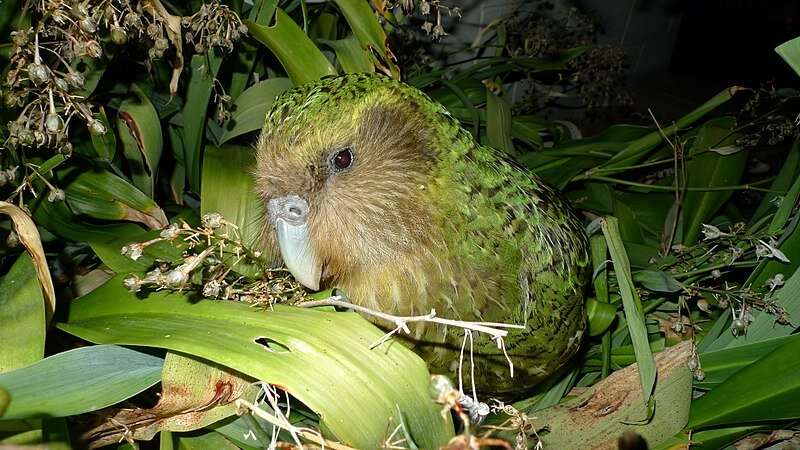April 4, 2023 report
This article has been reviewed according to Science X's editorial process and policies. Editors have highlighted the following attributes while ensuring the content's credibility:
fact-checked
peer-reviewed publication
trusted source
proofread
Scat study shows less diverse diet may be harming survival of the kākāpō

A team of environmental scientists at the University of Auckland and Manaaki Whenua—Landcare Research, both in New Zealand, has found that one of the reasons for the declining population of the endangered kākāpō is a reduction in diet variety. In their study, reported in the journal Frontiers in Ecology and Evolution, the group examined recent and fossilized bird feces (coprolites) found in caves where kākāpō live.
Kākāpō are the only flightless species of parrot. They are also the heaviest. The birds live in caves in New Zealand, and their numbers have been dropping since humans first appeared. Today, there are just a few hundred left. Prior research has shown that they are ineffective at defending themselves against animals introduced by humans and are also poor breeders. In this new effort, the researchers attempted to learn more about the birds in order to save them from extinction.
The work involved venturing into the caves where the birds live and collecting coprolites. The researchers pored through samples, which range in age from recent to up to hundreds of years old. Bits of the material were separated, allowing for DNA analysis, so the researchers could determine what sorts of food the birds eat. They found that the birds' diet has become much less diverse over the years.

The analysis showed that today, the birds feed mainly off leaves from rimu forests, but they once ate beech leaves, seeds, mistletoe and other types of vegetation. The researchers suggest the restricted diet is directly related to the caves where they live—the vegetation around them is severely limited. They also note that the birds tend to breed during times when rimu fruit is available—and that only happens every two to five years.
The researchers suggest that might be possible to save the birds by increasing the types of vegetation around the caves where they live. They also suggest it might be possible to entice the birds to breed when beech seeds are available, as they likely once did in the past.
More information: Alexander P. Boast et al, Ancient and modern scats record broken ecological interactions and a decline in dietary breadth of the critically endangered kākāpō parrot (Strigops habroptilus), Frontiers in Ecology and Evolution (2023). DOI: 10.3389/fevo.2023.1058130
Journal information: Frontiers in Ecology and Evolution
© 2023 Science X Network
















